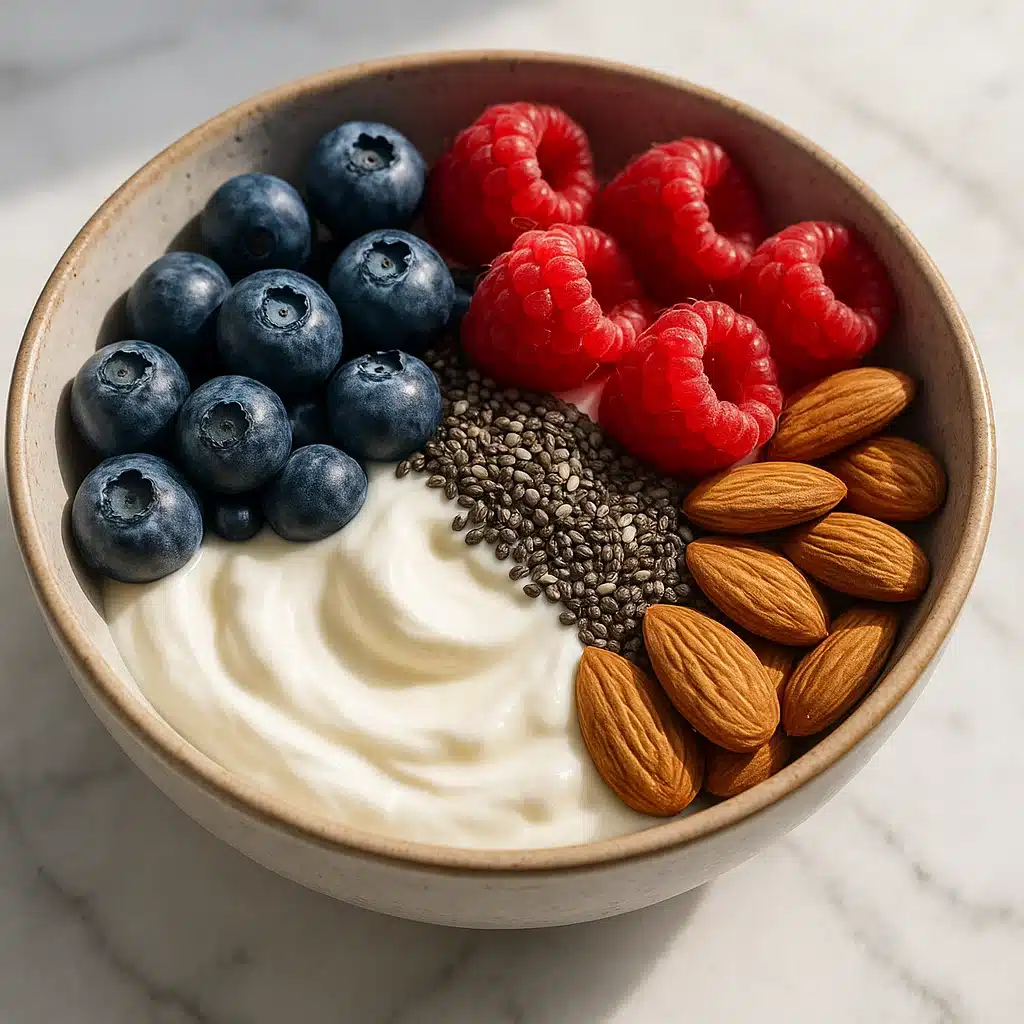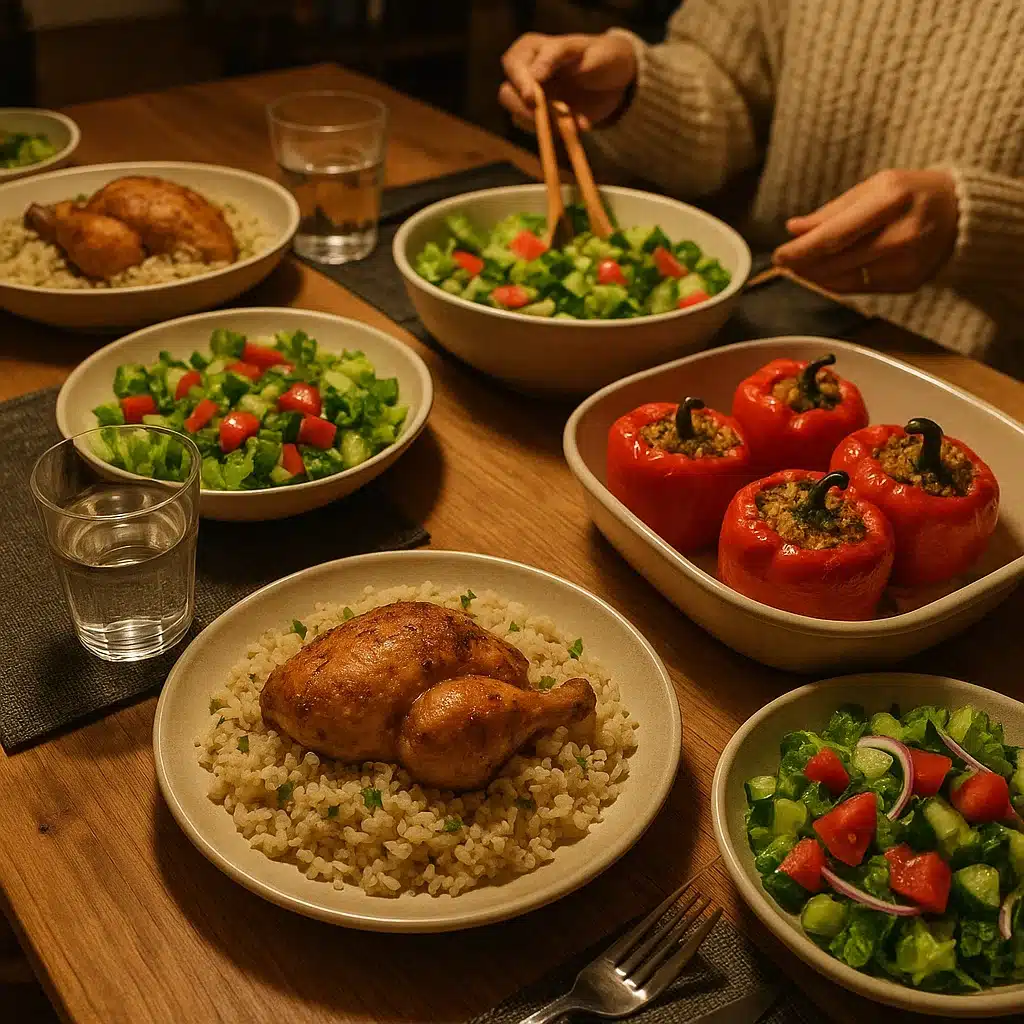Meal planning has become an essential skill for anyone looking to eat healthier, save money, and reduce the daily stress associated with meal preparation. In this comprehensive guide, we’ll explore all aspects of meal planning, from the fundamentals to advanced strategies, along with practical tools that will transform your approach to everyday cooking.
Table of Contents
Table of Contents
What is Meal Planning and Why Is It Important?
Meal planning is simply the act of planning your meals in advance. Rather than asking yourself every day “What am I going to cook tonight?”, you take a moment each week to plan all your meals, create an organized shopping list, and prepare certain elements in advance.
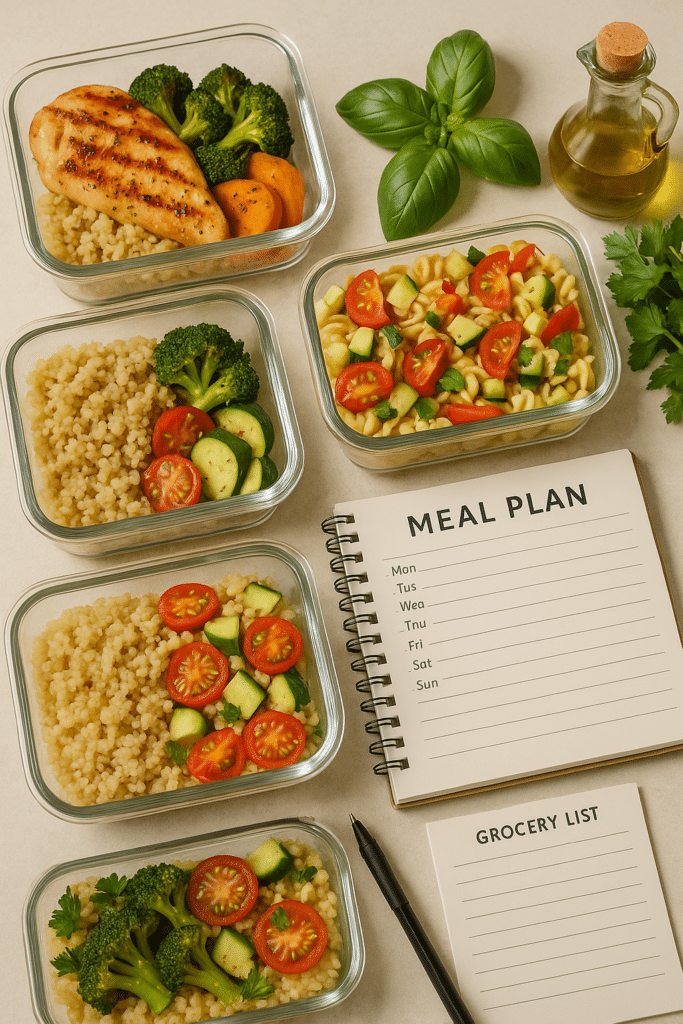
The benefits of meal planning are numerous and significant:
- Substantial financial savings: By planning your meals, you buy exactly what you need, thus reducing food waste and impulse purchases. Studies show that an average family can save between $1,500 and $2,000 per year through effective meal planning.
- Considerable time savings: Although initial planning takes time, you’ll save hours each week by avoiding daily trips to the supermarket and reducing the time spent deciding what to cook.
- Healthier eating: When you plan ahead, you’re less likely to turn to fast food options or prepared meals. You can consciously incorporate more fruits, vegetables, and lean proteins into your diet.
- Stress reduction: Eliminate the daily anxiety related to deciding what to cook, especially after a long day at work.
How to Start Meal Planning: Step-by-Step Guide
1. Assess your weekly schedule
Before you start planning your meals, take your schedule into account. Which days do you work late? When do you have more time to cook? Are there evenings when you typically eat out? This assessment will help you determine when to prepare quick meals and when you can afford more elaborate recipes.
2. Create a planning system that works for you
There are several approaches to meal planning:
- Complete weekly planning: Plan all meals (breakfast, lunch, dinner, and snacks) for each day of the week.
- Dinner-only planning: Focus on the meal that often causes the most stress.
- Thematic planning: Assign a theme to each day (e.g., Meatless Monday, Taco Tuesday, Pasta Wednesday) to simplify decision-making.
- Batch planning: Prepare large quantities of a few recipes and eat them throughout the week.
Choose the approach that best matches your lifestyle and preferences.
3. Build your recipe repertoire
Build a collection of reliable recipes that you enjoy and that are suitable for different situations:
- Quick recipes (less than 30 minutes)
- Slow-cooked or crockpot dishes
- Budget-friendly options
- Recipes using similar ingredients (to reduce waste)
- Meals that can be prepared in advance and frozen
Organize these recipes in a physical binder, an app, or a Pinterest board for easy access during your planning.
4. Establish your meal plan
Set aside a specific time each week (e.g., Saturday morning) to plan your meals. Here’s how to proceed efficiently:
- First, check your pantry, refrigerator, and freezer to see what you already have.
- Look at supermarket circulars for the week’s promotions.
- Consider potential leftovers and how you might reuse them.
- Select your recipes based on your schedule and available ingredients.
- Note your plan on a calendar, whiteboard, or dedicated app.
5. Create an organized shopping list
Once your meal plan is established, create a detailed shopping list. Organize it by supermarket sections (fresh produce, meats, dairy products, etc.) to save time while shopping. Remember to check the exact quantities you need to avoid buying too much or too little.
6. Incorporate meal prep
Meal prep involves preparing certain elements of your meals in advance. This may include:
- Washing and cutting vegetables
- Cooking proteins in large quantities (grilled chicken, ground beef)
- Preparing bases like rice, pasta, or legumes
- Assembling complete meals for the week
- Preparing sauces, dressings, or marinades
Dedicate 1-2 hours on the weekend to this preparation to save precious time during the week.
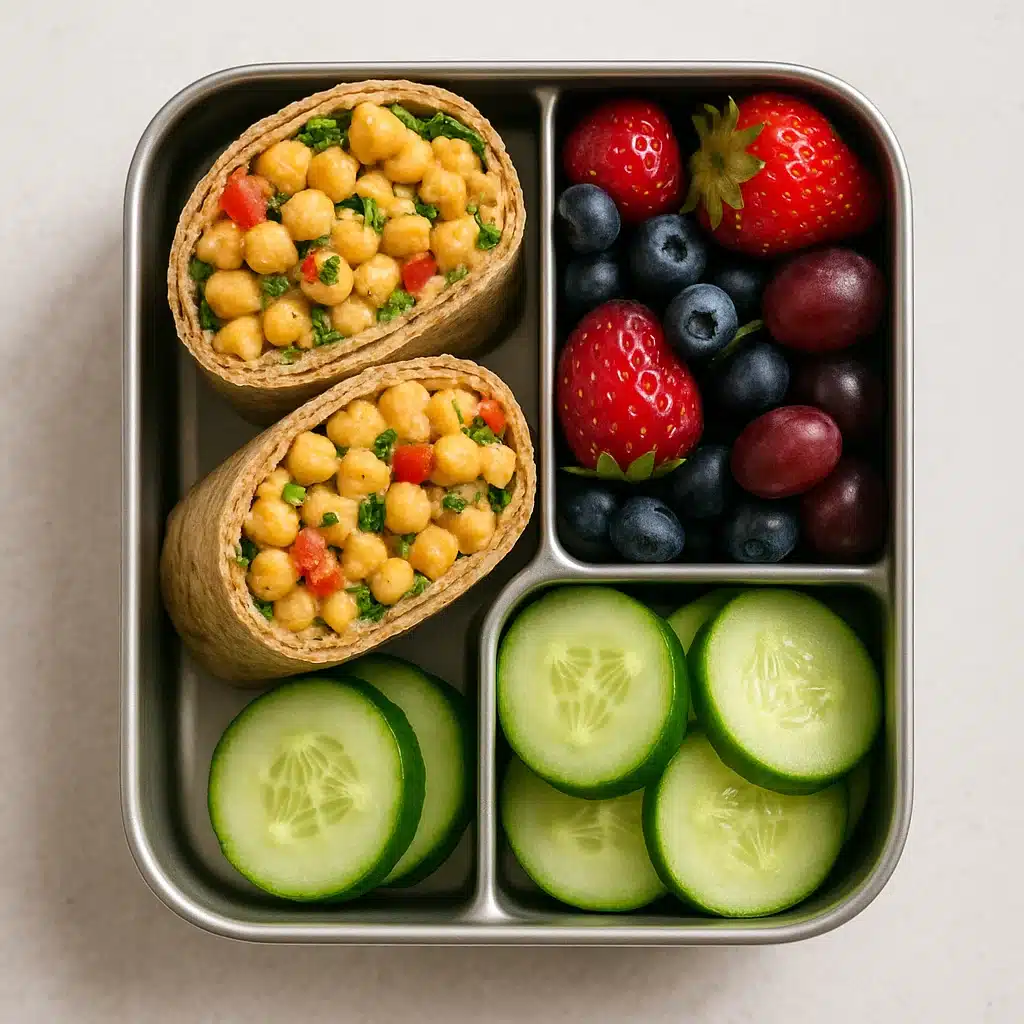
Advanced Meal Planning Strategies
Budget-friendly planning
If your main goal is to save money, try these strategies:
- Plan around promotions: Check special offers first, then build your menu.
- Incorporate more vegetarian meals: Plant proteins like legumes are generally cheaper than meat.
- Buy in bulk: Non-perishable staples are often cheaper in large quantities.
- Use leftovers creatively: Transform Sunday’s roast chicken into Monday’s salad and Tuesday’s tacos.
- Prioritize seasonal foods: They are generally cheaper and more flavorful.
Meal Planning for specific diets
Whether you’re following a ketogenic, vegan, paleo, or gluten-free diet, meal planning is particularly useful:
- Research recipes suitable for your diet and create a rotation of favorites.
- Prepare alternatives in advance for social situations or busy days.
- Keep appropriate snacks on hand to avoid deviations.
- Use specialized apps that offer meal plans adapted to your diet.
Family Meal Planning
Planning for an entire family presents unique challenges:
- Involve all members: Ask each person to choose one meal per week.
- Create a rotation system: Alternate between each person’s favorites.
- Adapt recipes: Prepare a common base that you can customize individually.
- Teach children: Involve them in planning and preparation to develop their culinary skills.
The psychology behind successful food organization deserves consideration. Many people report feeling a significant reduction in decision fatigue when they eliminate daily meal choices. This mental energy conservation can translate to improved focus and productivity in other areas of life. Additionally, the satisfaction of seeing well-organized refrigerator contents can create a positive feedback loop that reinforces the habit
Tools and Resources for Effective Meal Planning
Digital applications and tools
Many applications can simplify your meal planning process:
- Mealime: Offers personalized meal plans with automated shopping lists.
- Plan to Eat: Allows you to import recipes from the web and organize them into meal plans.
- Paprika: Combines recipe management, meal planning, and shopping lists.
- Notion or Trello: Versatile tools that you can customize for your planning system.
Essential equipment
Investing in a few key pieces of equipment can greatly facilitate your meal prep:
- Quality containers: Opt for glass containers of different sizes to store your preparations.
- Slow cooker or Instant Pot: Perfect for preparing large quantities with minimal effort.
- Food processor: Significantly speeds up vegetable preparation.
- Labels and markers: To identify and date your preparations.
Beyond traditional approaches, modern food preparation strategies have evolved to incorporate technology and community support. Many home cooks find that sharing responsibilities with family members not only lightens the workload but also creates valuable teaching moments. Children who participate in food preparation activities are more likely to develop healthy eating habits and basic culinary skills that will serve them throughout life
Weekly Meal Plan Examples
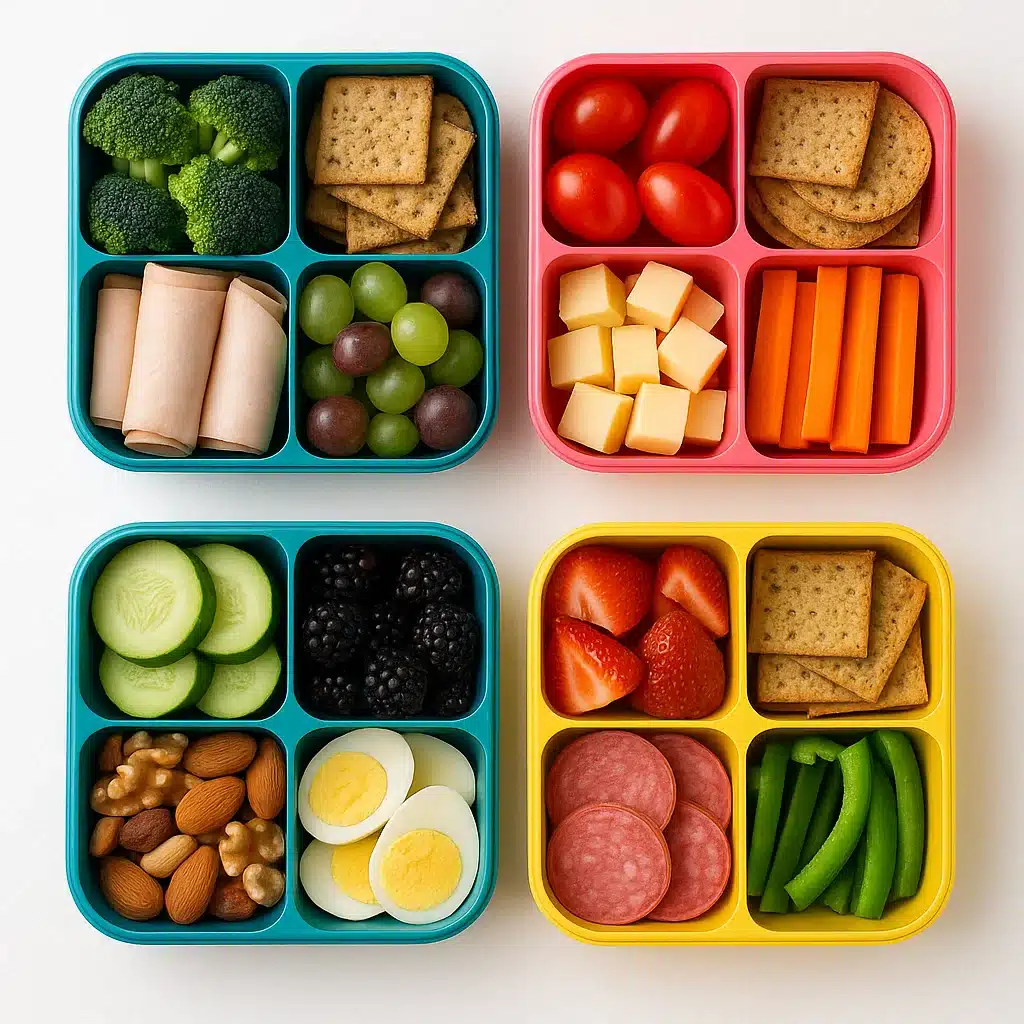
Budget-friendly plan for a family of four
Monday: Black bean rice bowl with roasted vegetables Tuesday: Lentil soup with homemade bread Wednesday: Whole grain pasta with seasonal vegetables Thursday: Chickpea and vegetable curry with rice Friday: Homemade pizza with leftover vegetables Saturday: Roast chicken with potatoes and carrots Sunday: Frittata with leftover vegetables and green salad
Balanced plan for an active person
Monday: Quinoa bowl with roasted vegetables and grilled chicken Tuesday: Salmon and avocado salad Wednesday: Tofu and vegetable stir-fry with brown rice Thursday: Chicken and vegetable wrap Friday: Tuna poke bowl Saturday: Steak with roasted sweet potatoes and green vegetables Sunday: Batch cooking preparation for the week (grilled chicken, rice, roasted vegetables)
Overcoming Common Meal Planning Obstacles
Lack of time
- Start small: plan only 3-4 dinners per week.
- Use appliances like the slow cooker or Instant Pot.
- Consider quality semi-prepared options for very busy days.
- Plan “leftover nights” to use what’s already prepared.
Meal fatigue
- Integrate a new recipe each week.
- Explore different world cuisines.
- Transform your leftovers creatively (e.g., chicken can become tacos, salad, sandwich, or soup).
- Organize recipe exchanges with friends or join online groups.
Managing unexpected events
- Keep a few quick meals in your freezer for emergencies.
- Have a plan B for days when your schedule changes.
- Learn a few “pantry recipes” that you can prepare with basic ingredients.
Cultural food traditions can be seamlessly incorporated into your weekly food organization system. Rather than viewing traditional recipes as too complex for everyday cooking, consider designating one day per week to explore cultural dishes. This approach not only diversifies your menu but also creates opportunities to connect with heritage and share important traditions with younger generations.
Conclusion: Meal Planning as a Lifestyle
Meal planning isn’t just an organizational technique; it’s a lifestyle change that can transform your relationship with food, your budget, and your time. Like any new habit, it takes time to master. Start simply, adapt strategies to your lifestyle, and be patient with yourself.
Over time, you’ll develop a system that works perfectly for you and your family. You’ll discover that the few hours devoted to planning each week save you not only money and time but also reduce your stress and improve your diet.
So, grab a calendar, a sheet of paper, or your favorite app, and begin your journey toward a more organized and less stressful life through meal planning!
FAQ on Meal Planning
How much time should be devoted to meal planning each week?
Most people spend about 30 minutes planning and 1-2 hours preparing food in advance. This investment saves 5-6 hours during the week.
How can I avoid food waste with meal planning?
Plan to use perishable ingredients in multiple meals, incorporate “leftover nights,” and freeze what you can’t use immediately.
Does meal planning work for people who live alone?
Absolutely! You can prepare recipes in individual portions or cook in large quantities and freeze extra portions for the following weeks.
How do I handle spontaneous cravings with a meal plan?
Integrate flexibility into your plan. You can exchange meals between different days or plan a “surprise night” where you can choose spontaneously.
What are the best recipes for beginning meal prep?
Start with simple recipes like customizable rice/quinoa bowls, casseroles, soups, or jar salads that keep well for several days.
Environmental considerations have become increasingly important in modern kitchen management. Thoughtful grocery shopping and food storage can significantly reduce household carbon footprint. By planning purchases carefully, using reusable containers, and minimizing food waste, environmentally conscious individuals can align their culinary practices with broader sustainability goals while still enjoying diverse and satisfying meals
Ready to take your meal planning journey to the next level? Join our thriving community of meal planning enthusiasts on Facebook where we share weekly templates, money-saving tips, and support each other’s meal planning goals. For visual inspiration, follow our Pinterest board featuring hundreds of organized meal prep ideas, time-saving kitchen hacks, and beautifully designed meal planning templates you can download and use immediately. Connect with us on social media and transform your meal planning experience today!
Have you already tried meal planning? Share your experiences, tips, and questions in the comments below!

